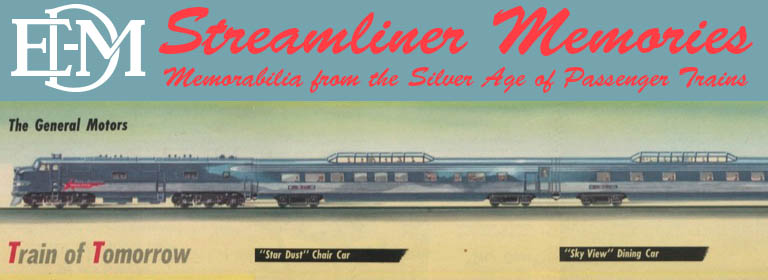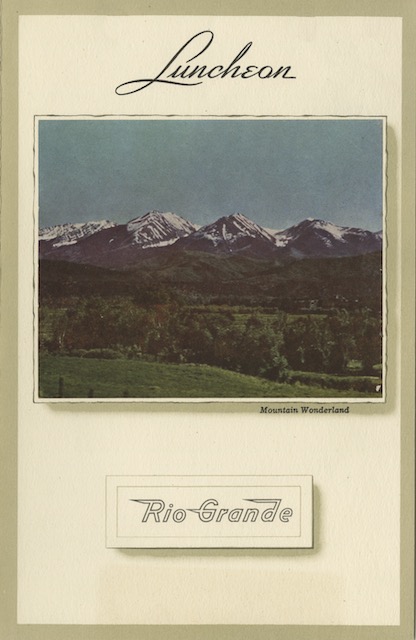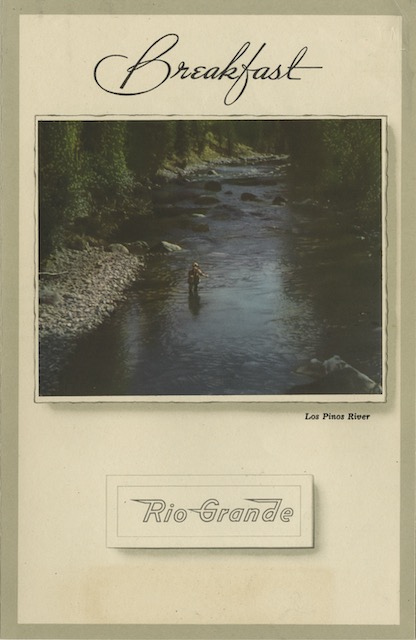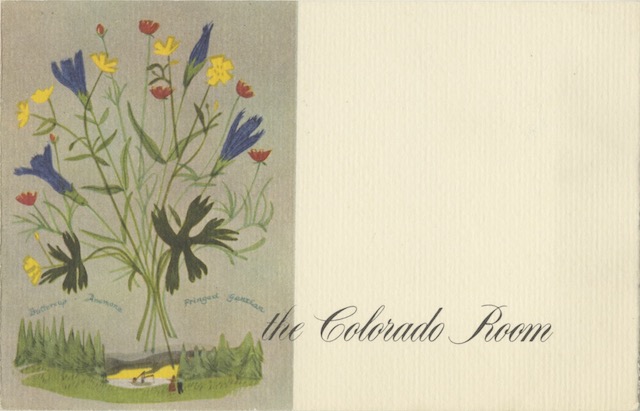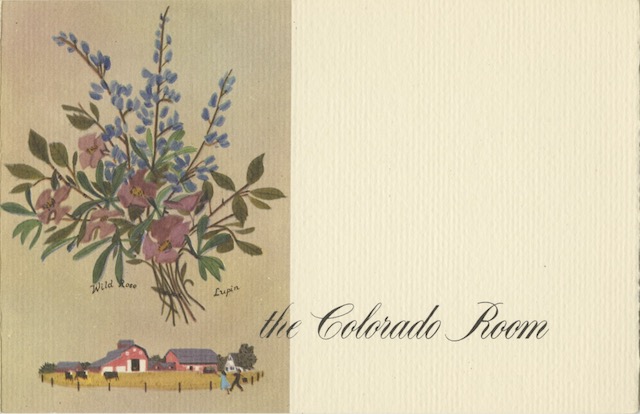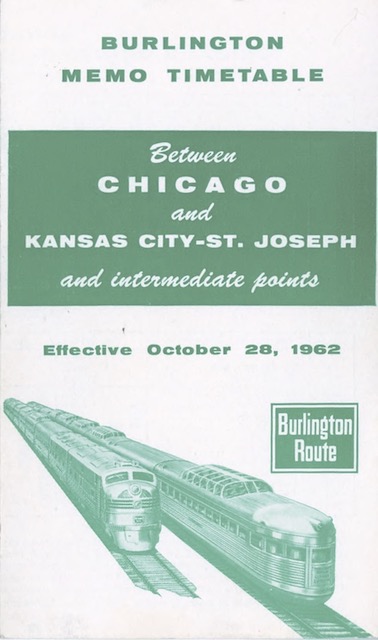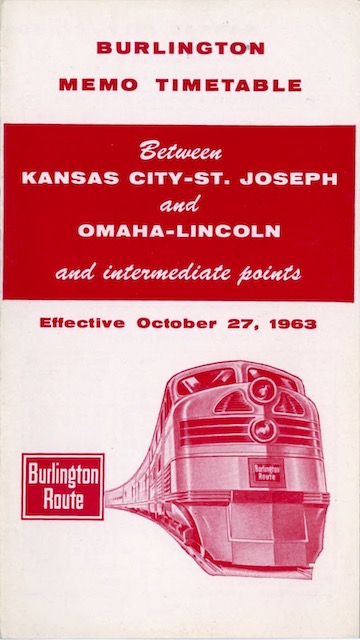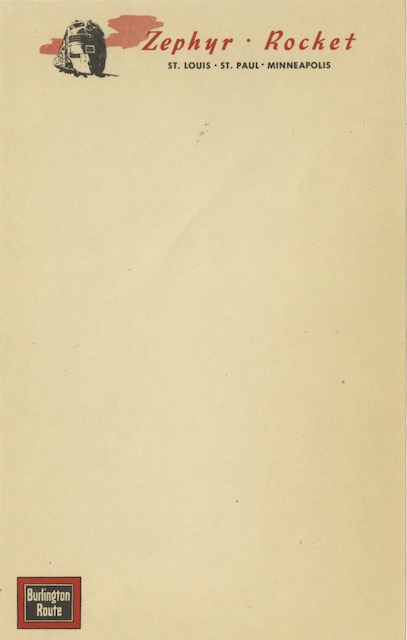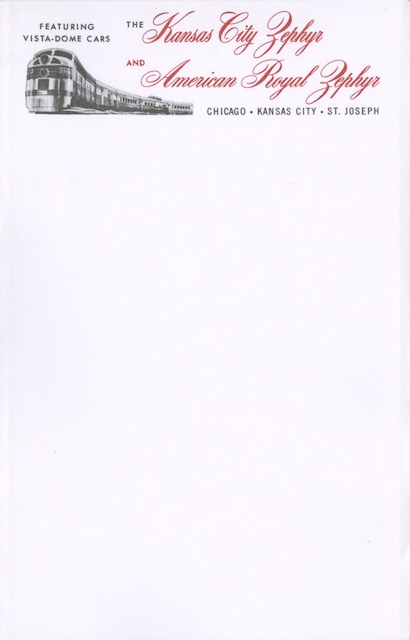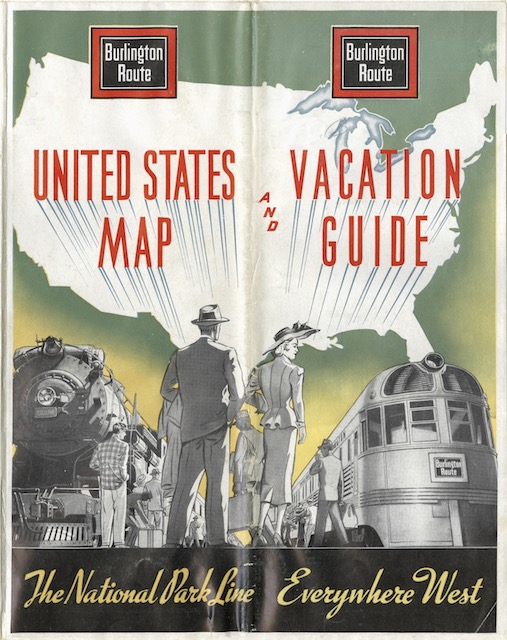August 1 was the tenth anniversary of the birth of Streamliner Memories. But I took a two-month vacation last year, so today is really the start of this blog’s eleventh year. Up through today, I’ve written just over 3,650 posts and uploaded nearly 5,000 PDFs of railroad documents. During that time, I’ve often noted the inaugural dates of major, pre-Amtrak intercity passenger trains. My list now includes more than 200 trains, though I am missing quite a few.
Inaugural Dates of Named Passenger Trains
| Train | Railroad | Endpoints | Month | Day | Year | Notes |
|---|---|---|---|---|---|---|
| Pennsylvania Limited | PRR | NY-Chicago | 6 | 15 | 1887 | First vestibuled train, all Pullman |
| Overland Flyer | UP | Chicago-Oakland | 11 | 13 | 1887 | |
| Golden Gate Special | UP | Chicago-Oakland | 12 | 5 | 1888 | All Pullman, vestibules, weekly, disc. 5-12-1889 |
| Fast Flying Virginian | N&W | Jersey City-Cincinnati | 5 | 11 | 1889 | disc. 5-12-1889 |
| Empire State Express | NYC | New York-Buffalo | 9 | 14 | 1891 | |
| California Limited | SF | Chicago-LA | 11 | 27 | 1892 | All Pullman, first with Fred Harvey diner |
| Exposition Flyer | NYC | NY-Chicago | 5 | 28 | 1893 | All Wagner extra fare |
| Sunset Limited | SP | New Orleans-LA-SF | 11 | 1 | 1894 | All Pullman, oldest named train |
| Overland Limited | UP | Council Bluffs-Ogden | 11 | 17 | 1895 | All Pullman, Chicago-Ogden after 1895 |
| Black Diamond | LV | Jersey City-Buffalo | 5 | 18 | 1896 | |
| Lake Shore Limited | NYC | NY-Chicago | 5 | 30 | 1897 | All Wagner |
| Pioneer Limited | CMStP | Chicago-MSP | 5 | 1898 | First named train on St. Paul Road | |
| Great Northern Flyer | GN | St. Paul-Seattle | 1 | 2 | 1899 | Replaced unnamed train |
| Piedmont Limited | SRY | NY-New Orleans | 3 | 12 | 1899 | |
| Overland Limited | UP | Chicago-Oakland | 10 | 15 | 1899 | |
| North Coast Limited | NP | Chicago-Seattle | 4 | 29 | 1900 | All Pullman |
| Pennsylvania Special | PRR | NY-Chicago | 6 | 15 | 1902 | |
| 20th Century Limited | NYC | NY-Chicago | 6 | 18 | 1902 | All Pullman |
| Golden State Limited | SP-RI | Chicago-LA | 11 | 2 | 1902 | All Pullman |
| Los Angeles Limited | UP | Chicago-LA | 5 | 1 | 1905 | Not formally named until 10-24-05, all Pullman |
| Oriental Limited | GN | St. Paul-Seattle | 12 | 1905 | ||
| Yellowstone Special | UP | SLC-end of track | 6 | 9 | 1907 | First reached West Yellowstone in June 1909 |
| Lark | SP | LA-SF | 5 | 8 | 1910 | |
| Panama Limited | IC | Chicago-New Orleans | 2 | 4 | 1911 | All Pullman |
| Olympian | CMStP | Chicago-Seattle | 5 | 28 | 1911 | |
| Columbian | CMStP | Chicago-Seattle | 5 | 28 | 1911 | |
| Kansas City-Florida Special | Frisco-SRR | Jacksonville-KC | 11 | 26 | 1911 | |
| Santa Fe De-Luxe | SF | Chicago-LA | 12 | 12 | 1911 | weekly, $25 extra fare, "unbelievably opulant" Lucius Beebe |
| Broadway Limited | PRR | NY-Chicago | 11 | 14 | 1912 | new name for Pennsylvania Special, all Pullman |
| Pacific Limited | UP | Chicago-SF | 4 | 3 | 1913 | |
| Glacier Park Limited | GN | St. Paul-Seattle | 4 | 25 | 1915 | |
| Navajo | SF | Chicago-LA | 10 | 1 | 1915 | |
| Texas Special | Frisco-MKT | St. Louis-San Antonio | 1915 | |||
| Scout | SF | Chicago-LA | 1 | 16 | 1916 | |
| Pan-American | SRY | Cincinnati-New Orleans | 12 | 5 | 1921 | |
| Daylight Limited | SP | SF-LA | 4 | 28 | 1922 | |
| Capital Limited | B&O | NY-Chicago | 5 | 12 | 1923 | All Pullman |
| Portland Limited | UP | Chicago-Portland | 1923 | |||
| Montrealer | NH-BM-CV-CN | Washington-Montreal | 6 | 15 | 1924 | |
| Ponce de Leon | SRY | Cincinnati-Jacksonville | 12 | 1 | 1924 | |
| Crescent Limited | SRY | New York-New Orleans | 4 | 26 | 1925 | |
| National Limited | B&O | Jersey City-St. Louis | 4 | 26 | 1925 | |
| Orange Blossom Special | SAL | New York-Miami | 11 | 21 | 1925 | All Pullman |
| Sunbeam | SP | Dallas-Houston | 1925 | |||
| Twilight Limited | NYC | Detroit-Chicago | 4 | 25 | 1926 | |
| Alouette | BM-CP | Boston-Montreal | 4 | 26 | 1926 | |
| Chief | SF | Chicago-Los Angeles | 11 | 14 | 1926 | All Pullman, GS & LALtd speeded up on same day |
| Gold Coast | UP | Chicago-Oakland | 11 | 14 | 1926 | disc. 1931 |
| Pocahontas | N&W | Norfolk-Cincinnati | 11 | 1926 | ||
| Argonaut | SP | New Orleans-LA | 1926 | |||
| Cascade | SP | Oakland-Portland | 4 | 17 | 1927 | All Pullman |
| Maple Leaf | GTW | Toronto-Chicago | 5 | 15 | 1927 | |
| Spirit of St. Louis | PRR | NY-St. Louis | 6 | 15 | 1927 | |
| Erie Limited | Erie | Jersey City-Chicago | 6 | 2 | 1929 | |
| Empire Builder | GN | Chicago-Seattle | 6 | 10 | 1929 | |
| Grand Canyon Limited | SF | Chicago-LA | 6 | 29 | 1929 | |
| Cascadian | GN | Spokane-Seattle | 1929 | |||
| Columbine | UP | Chicago-Denver | 5 | 22 | 1930 | |
| Portland Rose | UP | Chicago-Portland | 9 | 7 | 1930 | Previously named Portland Limited |
| Columbian | B&O | Jersey City-DC | 5 | 24 | 1931 | First air conditioned train |
| Imperial | SP-RI | Chicago-LA | 1931 | |||
| George Washington | C&O | Washington-Cincinnati | 4 | 30 | 1932 | |
| Pioneer Zephyr | CB&Q | KC-Lincoln | 11 | 11 | 1934 | 9000 |
| City of Salina | UP | KC-Salina | 1 | 1 | 1935 | M-10000 |
| Twin Cities 400 | C&NW | Chicago-MSP | 1 | 2 | 1935 | |
| Flying Yankee | BM-MC | Bangor-Boston | 4 | 1 | 1935 | |
| Twin Cities Zephyrs | CB&Q | Chicago-MSP | 4 | 17 | 1935 | 9901-9902 |
| Hiawatha | CMStP | Chicago-MSP | 5 | 29 | 1935 | |
| Comet | NH | Boston-Providence | 6 | 5 | 1935 | |
| City of Portland | UP | Chicago-Portland | 6 | 6 | 1935 | M-10001 |
| Flambeau | C&NW | Chicago-Ashland | 6 | 21 | 1935 | |
| Royal Blue | B&O | New York-Washington | 6 | 24 | 1935 | |
| Abraham Lincoln | Alton | Chicago-St. Louis | 6 | 24 | 1935 | |
| Mark Twain Zephyr | CB&Q | St. Louis-Burlington | 10 | 28 | 1935 | 9903 |
| City of Los Angeles | UP | Chicago-Los Angeles | 5 | 15 | 1936 | M-10002 |
| Challenger | UP | Chicago-Los Angeles | 5 | 15 | 1936 | day uncertain |
| Green Diamond | IC | Chicago-St. Louis | 5 | 17 | 1936 | |
| Denver Zephyr | CB&Q | Chicago-Denver | 5 | 31 | 1936 | |
| City of San Francisco | UP | Chicago-Oakland | 6 | 14 | 1936 | M-10004 |
| Minnesota 400 | C&NW | Chicago-Rapid City | 6 | 14 | 1936 | |
| City of Denver | UP | Chicago-Denver | 6 | 18 | 1936 | M-10005 M-10006 |
| Mercury | NYC | Cleveland-Detroit | 7 | 15 | 1936 | rebuilt from older cars |
| Sam Houston Zephyr | CB&Q | Houston-DFW | 10 | 1 | 1936 | 9901 |
| Hiawatha | CMStP | Chicago-MSP | 10 | 1 | 1936 | re-equipped |
| Denver Zephyr | CB&Q | Chicago-Denver | 11 | 8 | 1936 | 9906-9907 |
| Twin Cities Zephyrs | CB&Q | Chicago-MSP | 12 | 18 | 1936 | 9904-9905 |
| Ozark State Zephyr | CB&Q | KC-St. Louis | 12 | 20 | 1936 | 9902 |
| Coast Daylight | SP | LA-SF | 3 | 21 | 1937 | |
| Super Chief | SF | Chicago-Los Angeles | 5 | 18 | 1937 | |
| Chippewa | C&NW | Chicago-Upper Peninsula | 5 | 28 | 1937 | renamed Chippewa-Hiawatha in 1948 |
| Forty-Niner | CMStP | Chicago-Oakland | 7 | 8 | 1937 | |
| San Francisco Challenger | UP | Chicago-Oakland | 9 | 19 | 1937 | |
| Streamlined Sunbeam | SP | Dallas-Houston | 9 | 19 | 1937 | |
| Peoria Rocket | CRI&P | Chicago-Peoria | 9 | 19 | 1937 | |
| Des Moines Rocket | CRI&P | Chicago-Des Moines | 9 | 26 | 1937 | |
| KC-Twin Cities Rocket | CRI&P | MSP-KC | 9 | 29 | 1937 | |
| Crusader | Reading | Philadelphia-Jersey City | 12 | 13 | 1937 | |
| City of San Francisco | UP | Chicago-Oakland | 1 | 2 | 1938 | E2 |
| City of Los Angeles | UP | Chicago-Los Angeles | 1 | 2 | 1938 | E2 |
| KC-OKCity Rocket | CRI&P | KC-Oklahoma City | 2 | 13 | 1938 | |
| El Capitan | SF | Chicago-Los Angeles | 2 | 22 | 1938 | |
| Super Chief | SF | Second HW | 2 | 26 | 1938 | |
| San Diegan | SF | LA-SD | 3 | 27 | 1938 | |
| Chicagoan/Kansas Citian | SF | Chicago-KC | 4 | 17 | 1938 | |
| Twentieth Century Limited | NYC | NY-Chicago | 6 | 15 | 1938 | streamlined |
| New England States | NYC | Boston-Chicago | 6 | 15 | 1938 | streamlined |
| Broadway Limited | PRR | NY-Chicago | 6 | 15 | 1938 | streamlined, General, Liberty Ltd, and Spirit of St. Louis also streamlined |
| Golden Gate | SF | Oakland-Bakersfield | 7 | 1 | 1938 | |
| Super Chief | SF | Chicago-Los Angeles | 7 | 2 | 1938 | LW equipment |
| Hiawatha | CMStP | Chicago-MSP | 9 | 1 | 1938 | re-equipped |
| KC-Dallas Rocket | CRI&P | KC-Dallas | 11 | 15 | 1938 | |
| Afternoon Hiawatha | CMStP | Chicago-MSP | 1 | 21 | 1939 | |
| Silver Meteor | SAL | New York-Miami | 2 | 2 | 1939 | |
| Treasure Island Special | UP | Chicago-Oakland | 5 | 22 | 1939 | alternated days with 49er, in winter train became AZ Ltd |
| Exposition Flyer | CB&Q-RG-WP | Chicago-Oakland | 6 | 10 | 1939 | |
| Valley Flyer | SF | Oakland-Bakersfield | 6 | 11 | 1939 | |
| Trail Blazer | PRR | NY-St. Louis | 7 | 28 | 1939 | early all-coach train |
| Goldenrod | SRY | Birmingham-Mobile | 9 | 24 | 1939 | |
| Rocky Mtn Rocket | CRI&P | Chicago-Denver | 11 | 12 | 1939 | |
| Champion | ACL | New York-Miami | 12 | 1 | 1939 | |
| Tulsan | SF | Chicago-Tulsa | 12 | 1 | 1939 | |
| Henry M. Flagler | FEC | Jacksonville-Miami | 12 | 3 | 1939 | |
| Dixie Flagler | CEI-L&N-ACL-FEC | Chicago-Miami | 12 | 3 | 1939 | |
| Missouri River Eagle | MP | St. Louis-Omaha | 3 | 1 | 1940 | |
| Firefly | Frisco | KC-Tulsa | 3 | 29 | 1940 | |
| General Pershing Zephyr | CB&Q | KC-Lincoln | 4 | 15 | 1940 | 9908 |
| Silver Streak Zephyr | CB&Q | KC-Lincoln | 4 | 15 | 1940 | 9909 e5 |
| Texas Zephyr | CB&Q | Denver-DFW | 8 | 22 | 1940 | E5 |
| Southern Belle | KCS | KC-NO | 9 | 2 | 1940 | |
| Gulf Coast Rebel | GM&O | St. Louis-Mobile | 10 | 29 | 1940 | |
| Choctaw Rocket | CRI&P | Memphis-Amarillo | 11 | 17 | 1940 | |
| Ak-Sar-Ben Zephyr | CB&Q | Lincoln-Chicago | 12 | 11 | 1940 | |
| Midwest Hiawatha | CMStP | Chicago-Sioux City | 12 | 11 | 1940 | Used original Hi eqpt |
| Arizona Limited | SP-RI | Chicago-Phoenix | 12 | 15 | 1940 | |
| City of Miami | IC-CG-ACL-FEC | Chicago-Miami | 12 | 18 | 1940 | |
| South Wind | PRR-L&N-ACL-FEC | Chicago-Miami | 12 | 19 | 1940 | |
| San Diegan | SF | LA-SD | 1 | 1 | 1941 | |
| Zephyr-Rocket | CB&Q-CRI&P | St. Louis-MSP | 1 | 7 | 1941 | |
| Streamlined Lark | SP | LA-SF | 3 | 2 | 1941 | |
| Southerner | SRY | New York-New Orleans | 3 | 31 | 1941 | |
| Admiral | PRR | NY-Chicago | 4 | 27 | 1941 | |
| James Whitcomb Riley | NYC | Cincinnati-Chicago | 4 | 28 | 1941 | |
| Tennessean | SRY | Washington-Memphis | 5 | 17 | 1941 | |
| San Joaquin Daylight | SP | Oakland-LA | 7 | 4 | 1941 | |
| Prospector | RG | Denver-SLC | 11 | 17 | 1941 | disc. 7-5-42 |
| Streamlined Empire State Express | NYC | New York-Buffalo | 12 | 7 | 1941 | |
| Columbian | B&O | Jersey City-Chicago | 12 | 19 | 1941 | |
| Capitol 400 | C&NW | Chicago-Madison | 1 | 1942 | ||
| Panama Limited | IC | Chicago-NO | 5 | 1 | 1942 | |
| Colorado Eagle | MP | St. Louis-Denver | 6 | 21 | 1942 | |
| Prospector | RG | Denver-SLC | 10 | 1 | 1945 | |
| Zephyr 9902 | CB&Q | Chicago-Ottumwa | 1945 | |||
| Powhatan Arrow | N&W | Norfolk-Cincinnati | 4 | 28 | 1946 | |
| Sacramento Daylight | SP | LA-Sacramento | 5 | 2 | 1946 | |
| City of St. Louis | UP | St. Louis-LA | 6 | 2 | 1946 | |
| Pere Marquette | PM | Detroit-Grand Rapids | 8 | 10 | 1946 | |
| City of San Francisco 3 times a week | UP | Chicago-Oakland | 10 | 1 | 1946 | |
| Meadowlark | C&EI | Chicago-Joppa | 10 | 6 | 1946 | |
| Hummingbird | L&N-C&EI | Cincinnati-New Orleans | 11 | 17 | 1946 | |
| Georgian | L&N-C&EI | Atlanta-St. Louis | 11 | 17 | 1946 | |
| Royal Gorge | RG | Denver-SLC | 1946 | replaced Scenic Limited | ||
| Cincinnatian | B&O | Baltimore-Cincinnati | 1 | 19 | 1947 | |
| Empire Builder (streamlined) | GN | Chicago-Seattle | 2 | 7 | 1947 | |
| City of New Orleans | IC | Chicago-New Orleans | 4 | 27 | 1947 | |
| Utahn | UP | Cheyenne-Los Angeles | 5 | 14 | 1947 | |
| Silver Comet | SEC | New York-Birmingham | 5 | 18 | 1947 | |
| Golden State | SP-RI | Chicago-LA | 5 | 18 | 1947 | |
| Transcon | UP | Chicago-LA | 6 | 2 | 1947 | |
| Olympian Hiawatha | CMStP | Chicago-Seattle | 6 | 29 | 1947 | |
| Nancy Hanks | CofG | Atlanta-Savannah | 7 | 17 | 1947 | |
| City of San Francisco daily | UP | Chicago-Oakland | 9 | 1 | 1947 | |
| Gold Coast | UP | Chicago-Oakland | 10 | 1 | 1947 | Replaced SF Challenger, disc. 1-9-1957 |
| Nebraska Zephyr | CB&Q | Chicago-Lincoln | 11 | 16 | 1947 | |
| City of Kansas City | Wabash | St. Louis-KC | 11 | 26 | 1947 | |
| Silver Star | SAL | New York-Miami | 12 | 12 | 1947 | |
| Streamlined Golden State | SP-RI | Chicago-LA | 1 | 4 | 1948 | |
| Super Chief | SF | Chicago-Los Angeles | 2 | 29 | 1948 | daily |
| El Capitan | SF | Chicago-Los Angeles | 2 | 29 | 1948 | daily |
| Texas Chief | SF | Chicago-Galveston | 4 | 3 | 1948 | |
| Texas Eagle | MP | St. Louis-San Antonio-El Paso | 8 | 15 | 1948 | |
| Steeler | PRR | Pittsburgh-Cleveland | 12 | 12 | 1948 | |
| California Zephyr | CB&Q-RG-WP | Chicago-Oakland | 3 | 20 | 1949 | |
| Streamlined Columbian | B&O | Baltimore-Chicago | 5 | 5 | 1949 | First dome cars in east |
| Shasta Daylight | SP | Oakland-Portland | 7 | 10 | 1949 | |
| Gulf Wind | L&N-SAL | Jacksonville-New Orleans | 7 | 31 | 1949 | |
| Phoebe Snow | L-NKP | Hoboken-Buffalo | 11 | 15 | 1949 | |
| Flambeau 400 | C&NW | Chicago-Ashland | 5 | 26 | 1950 | |
| International | GN | Seattle-Vancouver | 6 | 18 | 1950 | |
| Streamlined Sunset Limited | SP | New Orleans-LA | 8 | 20 | 1950 | |
| Zephyrette | WP | SLC-Oakland | 9 | 15 | 1950 | |
| Western Star/Mid-Century Empire Builder | GN | Chicago-Seattle | 6 | 3 | 1951 | |
| Gopher/Badger | GN | MSP-Duluth | 5 | 26 | 1952 | |
| Mainstreeter | NP | Chicago-Seattle | 11 | 15 | 1952 | |
| American Royal Zephyr | CB&Q | Chicago-KC | 2 | 1 | 1953 | |
| KC Zephyr | CB&Q | Chicago-KC | 2 | 1 | 1953 | |
| San Francisco Chief | SF | Chicago-Oakland | 6 | 6 | 1954 | |
| Canadian | CP | Toronto-Vancouver | 4 | 24 | 1955 | |
| Super Continental | CN | Toronto-Vancouver | 4 | 24 | 1955 | |
| Kate Shelley 400 | C&NW | Chicago-Boone | 10 | 1955 | ||
| Jet Rocket | CRI&P | Chicago-Peoria | 2 | 1956 | ||
| Keystone | PRR | New York-Washington | 6 | 24 | 1956 | |
| Hi-Level El Capitan | SF | Chicago-Los Angeles | 7 | 8 | 1956 | |
| Xplorer | NYC | Cleveland-Cincinnati | 7 | 15 | 1956 | disc. 8-17-1957 |
| City of Las Vegas | UP | LA-LV | 12 | 18 | 1956 | |
| John Quincy Adams | NH | Boston-NY | 3 | 25 | 1957 | disc. 6-5-1958 |
| Roger Williams | NH | Boston-Washington | 4 | 28 | 1957 | |
| Dan'l Webster | NH | Boston-NY | 5 | 1957 | disc. 6-5-1958 | |
| Talgo Train ("Speed Merchant") | B&M | Boston-Portland | 1958 | disc. 1965 |
To download the complete spreadsheet, click here. Note that month, day, and year are separate fields because whoever programmed Excel couldn’t imagine anyone would ever use dates before 1900.
The first passenger trains began operating in the United States in the 1830s. As near as I can tell, however, few railroads applied names to their trains before the 1880s, or if they did they were destination-oriented names such as “Pacific Express” (for a westbound train) or “Federal Express” (for a train to Washington, DC). Continue reading
